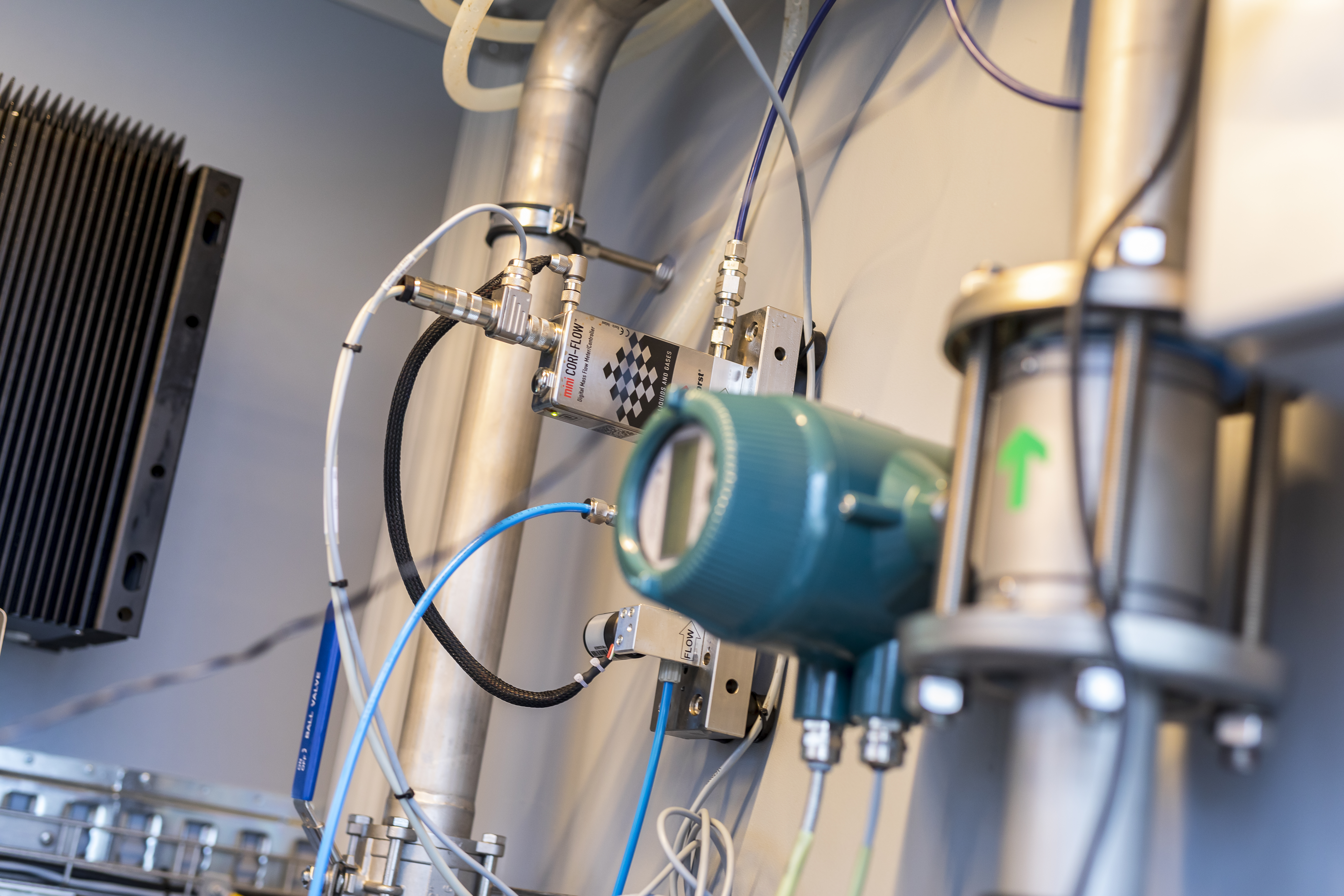
'Purifying groundwater with UV light is a game-changer'
Insatech
With support from the Danish Ministry of Environment, and in collaboration with the engineering company DGE, Insatech has developed a method for purifying contaminated water with strong UV light and hydrogen peroxide.
Pesticides and chlorinated solvents. It doesn’t sound like something anyone would want to drink. Yet, these harmful substances are found in a big number of Danish drinking water wells. Luckily, groundwater contamination can be targeted with new technology based on UV light, according to Managing Director in Insatech, Jacob Møller. The company is proud to introduce RemUVe:
“In short, RemUVe is designed to remove pesticides and chlorinated solvents through an advanced oxidation process, also known as AOP, based on strong UV light combined with a highly accurate dosage of hydrogen peroxide. The UV light causes the substances to oxidize, and hydrogen peroxide accelerates the process, so that they decompose into smaller, non-harmful molecules,” says Jacob Møller.
Despite this breakthrough discovery, it wasn’t in the cards that Insatech would solve the problems with chemicals in drinking water, according to Jacob Møller:
“As a company, we have a broad portfolio of products. It’s only in the last 10 years that we have established an actual engineering department. The core of our business is still instrumentation for example for calibrating processes in the pharmaceutical and maritime industries, among others.”
In 2017, one of Insatech’s engineers had the idea to combine UV light and oxidation to remove contaminants in water:
“From the start, we were excited about this idea, but we were also aware that we had to test it in the real world. We did this in cooperation with Vordingborg Water Board where we initiated an experiment to decompose pesticide residues in drinking water. With the Capital Region of Denmark, we also started to clean up contaminated industrial land. In both places we were able to remove pesticides and chlorinated solvents, even in large quantities. After this, we asked the Danish Ministry of Environment for funding for a number of comprehensive tests, which we completed and documented successfully,” Jacob Møller says.

A huge potential
Since finalizing the testing phase, the RemUVe methodology has proven to have an even broader application potential than first assumed, according to Jacob Møller:
“Besides the purification of drinking water and contaminated industrial land we have also discovered that many private companies need to purify water. For example, we are in contact with a number of breweries that extract drinking water for the production of beer and soft drinks. We also see opportunities in the food and pharmaceutical industries where you need to be 100 percent sure that the water you use is clean. We begin in Denmark where there are many challenges with harmful substances in the ground water and many contaminated industrial sites. After that, the obvious next step is to target other European countries. There are so many opportunities waiting, and we are ready for the task. We are 100 percent dedicated to making a difference for the planet.”
According to Jacob Møller, becoming a part of the UNDP SDG Accelerator programme was a great opportunity to learn more about the SDG’s and how sustainability can be used as part of Insatech’s business development:
“Turning an entire company in a green direction is a big task, and we’re grateful for the support we have received from Rainmaking and UNDP through the SDG Accelerator programme. We’ve certainly become better at challenging ourselves – and finding new solutions to old problems.”
The next step? A clear focus on scaling the RemUVe solution and engaging with new clients in order to restore the access to clean drinking water, according to Jacob Møller:
“We begin in Denmark where there are many challenges with harmful substances in the ground water and many contaminated industrial sites. After that, the obvious next step is to target other European countries. There are so many opportunities waiting, and we are ready for the task. We are 100 percent dedicated to making a difference for the planet.”
Read more about Insatech here.
SDG 6.3
Insatech aims to contribute to the improvement of water quality, wastewater treatment and safe reuse, overall supporting the realization of clean water and sanitation.
By 2030
Insatech aims to improve water quality by reducing pollution, eliminating dumping and minimizing release of hazardous chemicals and materials.
Solution
In collaboration with the engineering company DGE, Insatech has developed a method for purifying contaminated water with strong UV light and hydrogen peroxide. The method breaks down hazardous chemicals into smaller, non-harmful molecules.
Founded 1989
Insatech has their headquarters in Præstø, Denmark, and employs approximately 75 people.
Business model
Insatech's core business consists of sales and service of instruments for the pharma and maritime industries, among others.
Further...
Insatech is increasingly focusing on more complex development work.

 Locations
Locations